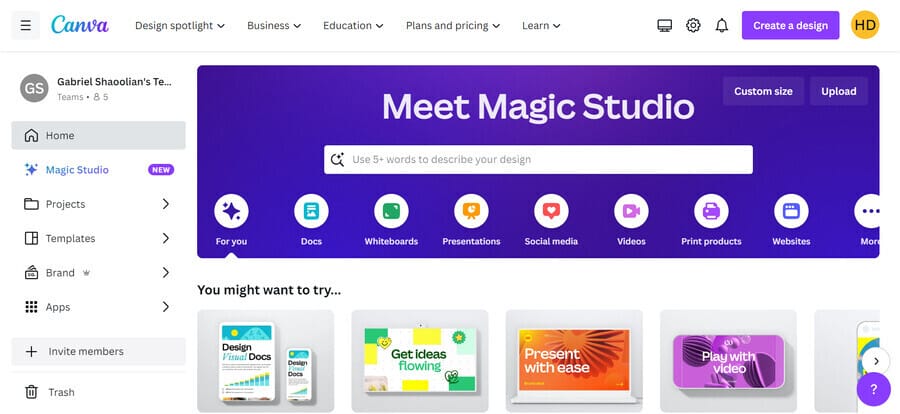Comprehending Individual Experience: Key Principles for Successful Website Design
In the world of web layout, understanding individual experience (UX) is critical to creating systems that not only bring in but additionally maintain users. Secret concepts such as intuitive navigating and effective feedback mechanisms play important duties in cultivating individual contentment. Furthermore, considerations for accessibility make sure that all customers can involve with the web content flawlessly.
Significance of Customer Experience

In the world of internet layout, one can not ignore the relevance of individual experience (UX) as an essential aspect that directly affects the success of a site. A positive UX not only boosts individual contentment yet likewise fosters commitment, motivating repeat gos to and interactions. When customers come across a interesting and intuitive interface, they are most likely to check out the material, exchange consumers, or share their experiences with others. This natural promo can dramatically intensify a brand name's reach and exposure.
It incorporates the general functionality of an internet site, guaranteeing that navigation is seamless and details is conveniently accessible. Websites that focus on UX are commonly viewed as even more reputable and trustworthy, which can have an extensive effect on conversion prices.
Eventually, investing in user experience is not simply a design choice; it is a tactical decision that can separate a brand name in a congested market. By focusing on UX, organizations can produce meaningful interactions that resonate with customers, leading the way for sustained success in the electronic landscape.
Functionality Concepts
Effective website design depends upon the application of essential usability principles that guarantee a site is both straightforward and useful. Central to these principles is the concept of intuitiveness, where customers can browse the site easily without comprehensive direction. Clear navigation frameworks, including regular layouts and well-labeled food selections, boost this user-friendly experience, allowing users to find details promptly.

Consistency is similarly important; maintaining uniformity in style components, terms, and treatments across the website assists to reduce complication. Customers ought to not need to relearn how to interact with various areas of the site.
Additionally, error avoidance and recovery are important for usability. Internet sites ought to be developed to lessen the opportunity of individual mistakes, and when errors take place, clear and positive error messages need to direct customers in the direction of resolution.
Accessibility Factors To Consider
Making sure ease of access in website design is critical for developing inclusive digital experiences that cater to all users, consisting of those with handicaps. Accessibility factors to consider include designing internet sites that suit diverse requirements, allowing customers with visual, acoustic, cognitive, or motor disabilities to browse and communicate efficiently.
To achieve this, web developers ought to look at here now stick to developed guidelines, such as the Web Web Content Accessibility Guidelines (WCAG) These standards give a framework for making material perceivable, operable, reasonable, and robust. Trick techniques consist of making certain sufficient shade contrast, providing message options for non-text content, and ensuring keyboard navigability.
In addition, semantic HTML ought to be made use of to improve display viewers compatibility, enabling customers with aesthetic disabilities to comprehend the structure and meaning of material without effort. web design. Offering clear, succinct directions and using simple language can better boost functionality for people with cognitive impairments
Routine access screening, entailing actual individuals with handicaps, is vital to determine barriers and boost the user experience. By focusing on ease of access, internet designers not only abide by legal requirements yet also foster an even more fair digital landscape, eventually profiting every person via enhanced functionality and engagement.
Visual Design Components
A myriad of aesthetic design aspects plays a vital role fit customer perceptions and experiences on a web site. These elements consist of color pattern, typography, layout, imagery, and whitespace, each adding to the total visual charm and performance of a site.

Shade plans evoke feelings and find out here now can affect customer actions; as an example, warm colors might create a sense of seriousness, while trendy colors often promote calmness. Typography, on the various other hand, influences readability and can establish a brand name's character - web design. The selection of font design and size should align with the site's objectives and target market
Imagery, including symbols and images, boosts narration and can dramatically impact user involvement. High-grade visuals develop a feeling of professionalism and reliability, while poor-quality images might interfere with the user experience.
Format and whitespace are similarly vital, as they guide individuals through the content. A well-structured design assists individuals discover info rapidly, while adequate whitespace prevents mess, promoting a more enjoyable browsing experience.

Examining and Version
Individual screening and version are basic parts of an effective website design process. These practices enable designers to gather valuable responses from actual users, guaranteeing that the end product meets their demands and assumptions. User screening entails observing how genuine users connect with a web site, identifying use problems, and understanding customer habits. This straight responses is essential in revealing discomfort points that might not appear during the style stage.
Version, on the various other hand, is the procedure of refining the style based on the understandings gained from user testing. By making incremental adjustments and re-evaluating the layout, groups can enhance performance, enhance looks, and enhance customer interaction. This intermittent method fosters a society of continual renovation, permitting designers to adapt to user demands and arising trends effectively.
In addition, incorporating both user testing and iteration right into the style procedure results in more educated decision-making and inevitably leads to an extra user-centered item. By embracing these principles, web developers can produce more instinctive, engaging, and reliable experiences that reverberate with their target market, eventually driving higher user contentment and retention.
Conclusion
In final thought, individual experience is a critical component of effective internet style, encompassing functionality, availability, and aesthetic factors to consider. Constant testing and model offer as vital processes for addressing click here to find out more and recognizing user pain points, ensuring that web styles continue to be adaptable to progressing requirements.
In the realm of internet design, comprehending customer experience (UX) is extremely important to developing systems that not only attract but additionally retain individuals.In the realm of web design, one can not take too lightly the relevance of customer experience (UX) as a crucial element that directly affects the success of a site. Individual testing includes observing just how genuine individuals connect with a website, determining usability issues, and comprehending individual actions.In verdict, customer experience is a vital component of reliable web layout, incorporating functionality, ease of access, and aesthetic considerations. Continual screening and model offer as important procedures for recognizing and resolving customer pain factors, ensuring that web designs continue to be versatile to advancing requirements.
 Jonathan Taylor Thomas Then & Now!
Jonathan Taylor Thomas Then & Now! Hallie Eisenberg Then & Now!
Hallie Eisenberg Then & Now! Andrew Keegan Then & Now!
Andrew Keegan Then & Now! Danielle Fishel Then & Now!
Danielle Fishel Then & Now! Andrew McCarthy Then & Now!
Andrew McCarthy Then & Now!